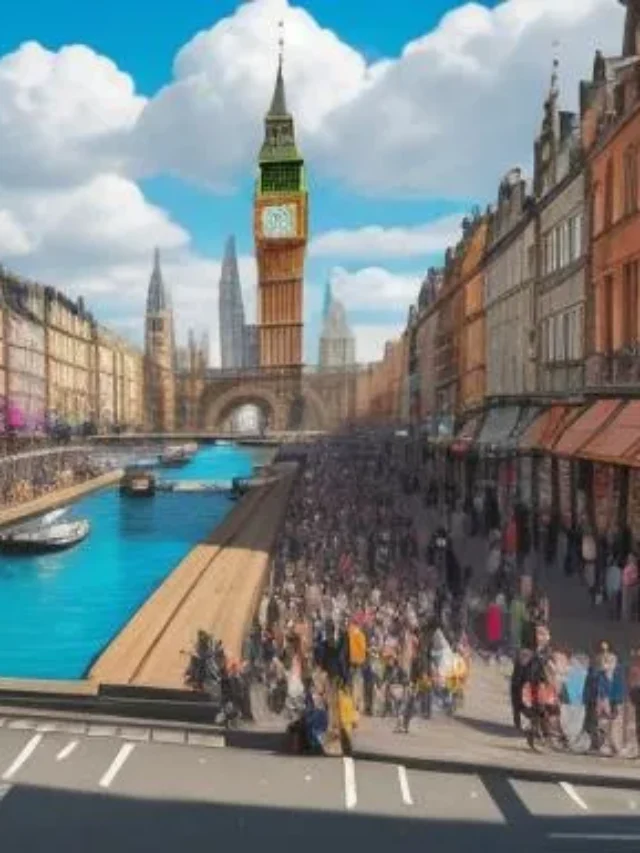The Glastonbury Festival is one of the most renowned music and arts festivals in the world, drawing fans from all corners to the picturesque fields of Somerset, England. Since its inception in 1970, Glastonbury has become a cultural icon, attracting legendary performers and millions of fans who flock to experience its unique blend of music, arts, and community spirit.
Glastonbury Festival: World’s Most Iconic Music and Arts Festival
The History and Significance of Glastonbury Festival
Dairy farmer Michael Eavis founded Glastonbury in 1970, drawing inspiration from the hippie and free festival movements of the late ’60s. It began with just 1,500 attendees and a ticket price of £1, including free milk from the farm. Today, it’s a massive event with over 200,000 attendees, multiple stages, and performances from global superstars across genres.
The Lineup of Glastonbury Festival: A Mix of Legends and Rising Stars
Glastonbury is famous for its diverse lineup. Each year, the festival boasts headliners from across genres—rock, pop, electronic, hip-hop, and more. Past headliners include legendary artists such as David Bowie, Paul McCartney, Beyoncé, and The Rolling Stones. Alongside these big names, Glastonbury showcases emerging artists on smaller stages, offering something for every music lover.
- Pyramid Stage: The iconic main stage hosting top headliners.
- Other Stage: Known for its eclectic mix and legendary performances.
- West Holts: Focusing on world music and diverse genres.
- Shangri-La: A wild, immersive area that’s part art installation, part rave.
Beyond the Music: Glastonbury’s Unique Attractions
One of the things that sets Glastonbury apart is its commitment to arts and cultural experiences beyond just music. You’ll find:
- Theatre and Circus Areas: Performances by circus acts, comedy, cabaret, and theatre troupes.
- Healing Fields: Offering wellness activities like yoga, meditation, and alternative therapies.
- Green Fields: Dedicated to eco-friendly practices, sustainability workshops, and nature-inspired installations.
- The Kidz Field: A family-friendly zone with activities, workshops, and entertainment for children.
Sustainability and Glastonbury’s Green Goals
Sustainability is a core value for Glastonbury. Attendees are encouraged to “Leave No Trace,” and the festival has pioneered eco-friendly practices, like banning single-use plastic bottles and promoting recycling. From waste-free initiatives to renewable energy sources, Glastonbury is a leader in festival sustainability efforts.
Glastonbury Festival: How to Experience
Tickets to Glastonbury are famously challenging to get due to high demand, with a registration process required in advance. The festival usually takes place in June, so eager attendees should start planning months ahead to ensure they’re part of the action.
Tips for First-Time Glastonbury Attendees
- Be Prepared for Weather: The British weather is unpredictable. Bring waterproof gear and sturdy boots, as the festival is known for its infamous muddy fields.
- Explore Beyond the Main Stage: Some of the most memorable experiences happen off the beaten path, so wander around and discover hidden stages and art installations.
- Stay Sustainable: Respect the festival’s green guidelines, and aim to leave the site clean.
Why Glastonbury Stands Out
Glastonbury isn’t just a festival—it’s a community experience that celebrates music, creativity, and environmental responsibility. It’s a must-visit for anyone who loves music and arts or wants to be part of a global cultural phenomenon. Glastonbury has become more than a festival; it’s a legacy that continues to inspire and attract people from all walks of life.
If you’re lucky enough to snag a ticket, you’ll be part of one of the most unforgettable experiences in the world.


Pingback: US Election Day - USA News & Trends